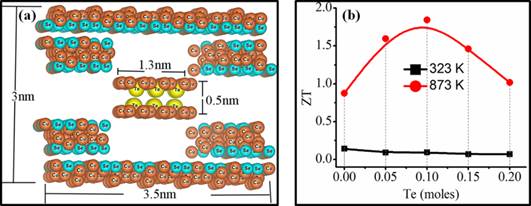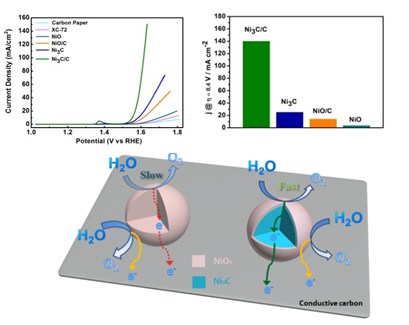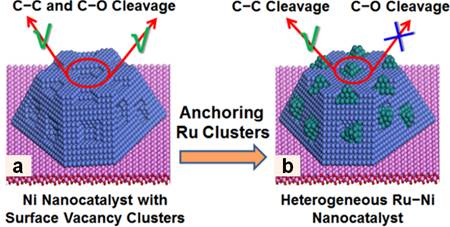
News and Events
Science Highlights
Home /
|
|
|
Recently, a team consists of Dr. Sajid Butt of Prof. Ce-Wen Nan’s group from Tsinghua University and Dr. Wei Xu from Institute of High Energy Physics of CAS and their coworkers, has developed a superionic conductor Cu2Se based thermoelectrics embedded with Cu2Te nanoclusters. The Figure of merit was optimized to record high value ~1.9 at 873K. To unveil the origin of the enhanced thermoelectricity they have emplo...
|
|
|
|
Thermoelectric materials are promising in thermal to electrical ( vice versa ) energy conversion applications .Nowadays the thermoelectric materials are becoming a spotlight of energy-related materials .The BiCuSeO based thermoelectric materials hold great promises in high temperature applications with superb Figure of merit .The thermoelectric Figure of merit ( ZT ) value has been optimized to exceed 1 at 900 K t...
|
|
|
|
Professor Changzheng Wu and co-workers from University of Science and Technology of China, reported that dual electrical-behavior regulation based on metallic electrocatalyst can successfully improve its corresponding catalytic activity. Related results published on Advanced Materials (Adv. Mater. 2016, 28 (17), 3326–3332).
|
|
|
|
Selective hydrogenation of α,β-unsaturated aldehydes to corresponding unsaturated alcohols is an important reaction in the production of fine chemicals. Co-based intermetallic compounds (IMCs) materials have recently been explored in the selective hydrogenation of α,β-unsaturated aldehydes with good performances. However, the conventional preparation method of Co-based IMCs normally suffers from rigorous condi...
|
|
|
|
The oxygen vacancy on the surface of CeO2 is one of the most interesting catalytic structures in the field of heterogeneous catalysis. In a variety of reactions (e.g. CO oxidation, water gas shift reaction, hydrogenation of CO/CO2), the oxygen vacancies participate in the catalytic process via two key routes: (1) storing and releasing oxygen, and (2) promoting the dispersion degree and activity of supported noble-...
|
|
|
|
The defect structure on the metal catalyst surface, with a large density of low-coordinated atoms and a higher-lying d state, normally enables enhanced binding of reactant molecules and serves as the active sites for heterogeneous catalysis processes. Therefore, the surface defects may dominate the reactivity of catalysts, and great efforts have been made to develop novel metal catalysts with abundant and controll...
|

Copyright © 2011 - 2012 Beijing Synchrotron Radiation Facility






